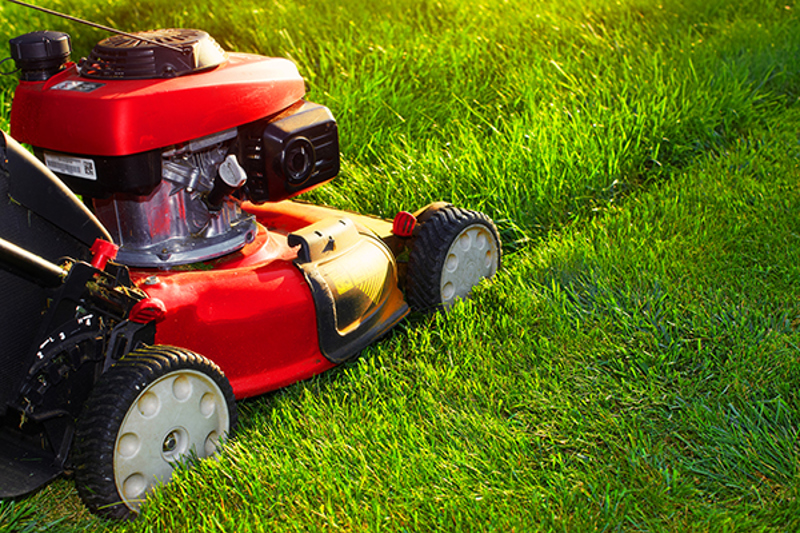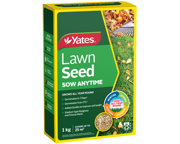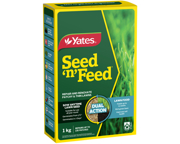Feeding
Grass grows quickly while it’s warm, using up lots of energy. Mowing also depletes the lawn’s energy reserves. The simplest fix for this is to add fertiliser, to supply the plant-available nutrients your grass needs. Regular fertilising keeps your lawn healthy and green right through the year.
You'll get the best results from applying fertiliser regularly but sparingly, at the intervals specified on the label. Don’t wait until the lawn starts to look hungry, because reviving a nutrient-depleted lawn always takes more time (and $) than sticking to a regular fertilising schedule does. The fertilising rule of thumb is ‘light and frequent’, for best results.
Use a good quality balanced fertiliser, like Yates Lawn Fertiliser Quarterly, a clever granular lawn food that combines the benefits of both fast-acting and gradually released nitrogen: the fast release component provides rapid results in 7 days, while the slow release feeds over a prolonged 12 week period.
If your lawn looks like it needs a boost, it's great idea to choose a fertiliser that includes stress-relieving ingredients. Yates Lawn Fertiliser Quarterly Hose-on is an excellent option, as it feeds for 3 months, but also contains seaweed and humates that help your lawn and its microbial community bounce back after a tough season.
Another great choice is Yates Dynamic Lifter Organic Lawn Food, which combines composted chicken manure, blood & bone, fish and seaweed in a rich blend to enrich the structure of the soil. It does this by adding organic content that encourages earthworms and beneficial soil micro-organisms, that in turn help to improve the soils porosity (drainage) and air movement. This all makes it easier for your lawn to grow and root deeper into the soil.
Weeding
It's important to control broadleaf weeds, because they'll compete with your grass and crowd it out if they can. Fortunately, it’s pretty simple to control lawn weeds with a selective herbicide. This is the type of weedkiller that removes weedy invaders without harming your lawn grass.
The simplest way to get rid of weeds like dandelion, clover, capeweed and thistles in your lawn is with Yates Weed n Feed Double Action Hose On. It's ideal for cool-season grass types like fescue, tall fescue, perennial ryegrass and bent/browntop. It's super-easy to apply, you just click the bottle onto your hose and spray away.
A word of warning though, if you're oversowing grass seed it pays to time your weedkiller applications carefully. Selective lawn weedkillers can affect the germination rate of grass seed, if you sow too soon after you've applied weedkiller. The rule of thumb is to wait for 4-5 weeks after using lawn weedkiller, before you sow grass seed onto the treated area; this ensures you get peak grass germination and excellent results from your hard work.























Share
Share this article on social media